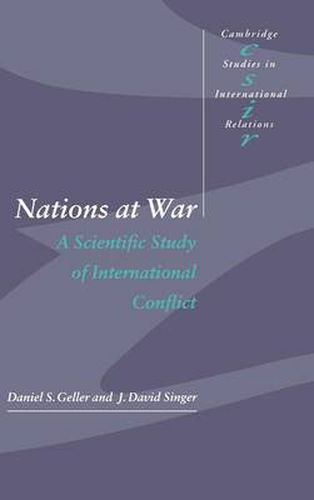Readings Newsletter
Become a Readings Member to make your shopping experience even easier.
Sign in or sign up for free!
You’re not far away from qualifying for FREE standard shipping within Australia
You’ve qualified for FREE standard shipping within Australia
The cart is loading…






Nations at War provides an explanation of war in international politics grounded on data-based, empirical research. The book classifies and synthesizes the research findings of over 500 quantitative analyses of war at the analytic level of the state, dyad, region, and international system. Because wars follow from political decisions, two basic decision-making models - the rational and the non-rational - are examined in relation to the explanatory framework of the volume. In addition, case analyses of two wars - the Iran/Iraq War (1980), and World War I (1914) - are provided as demonstrations of scientifically-based explanations of historical events. The primary structural factors responsible for the onset and seriousness of war are identified and the explanations are developed according to the scientific model of ‘covering laws’. The conclusion presents a discussion of the potential for probabilistic conditional predictions of conflict within the context of war and peace studies.
$9.00 standard shipping within Australia
FREE standard shipping within Australia for orders over $100.00
Express & International shipping calculated at checkout
Nations at War provides an explanation of war in international politics grounded on data-based, empirical research. The book classifies and synthesizes the research findings of over 500 quantitative analyses of war at the analytic level of the state, dyad, region, and international system. Because wars follow from political decisions, two basic decision-making models - the rational and the non-rational - are examined in relation to the explanatory framework of the volume. In addition, case analyses of two wars - the Iran/Iraq War (1980), and World War I (1914) - are provided as demonstrations of scientifically-based explanations of historical events. The primary structural factors responsible for the onset and seriousness of war are identified and the explanations are developed according to the scientific model of ‘covering laws’. The conclusion presents a discussion of the potential for probabilistic conditional predictions of conflict within the context of war and peace studies.